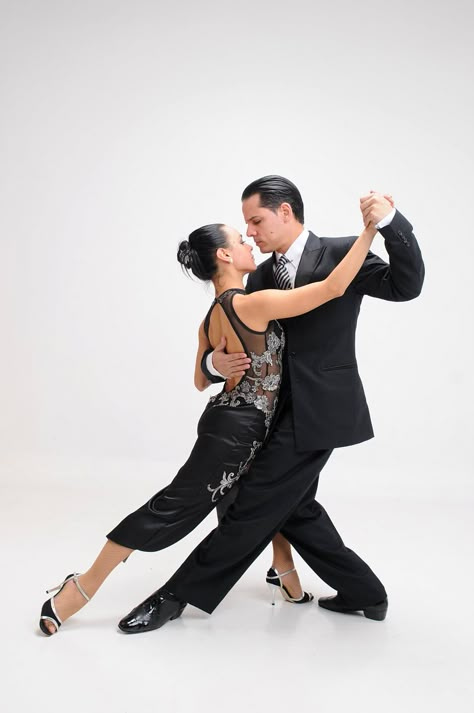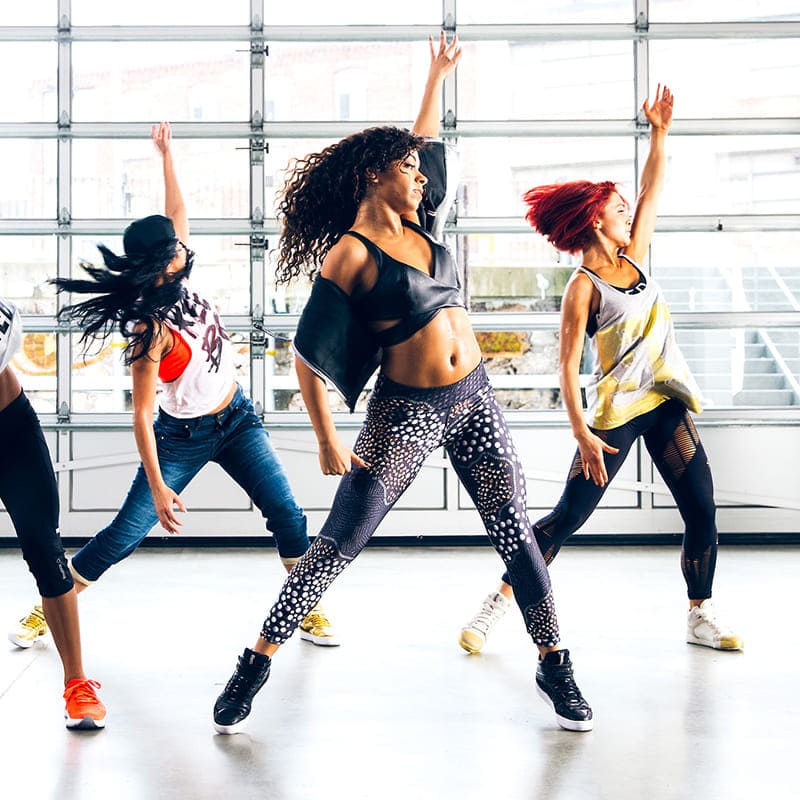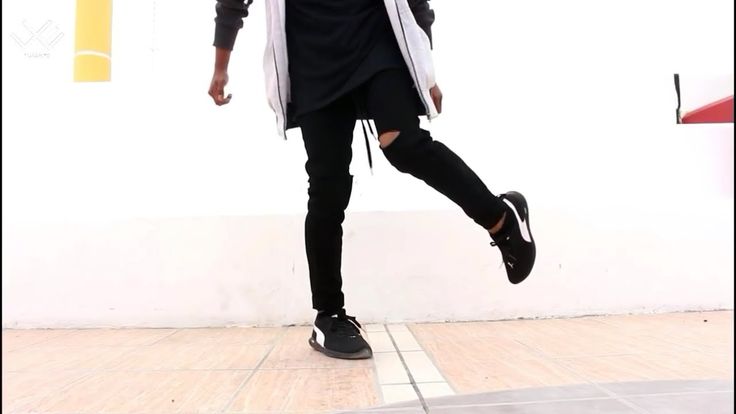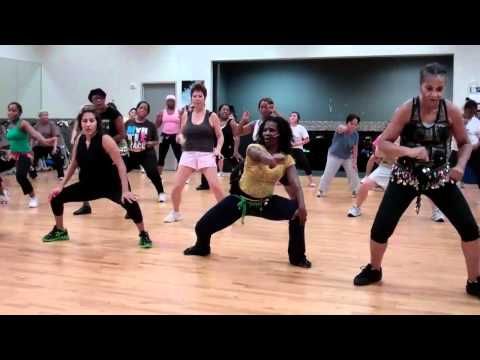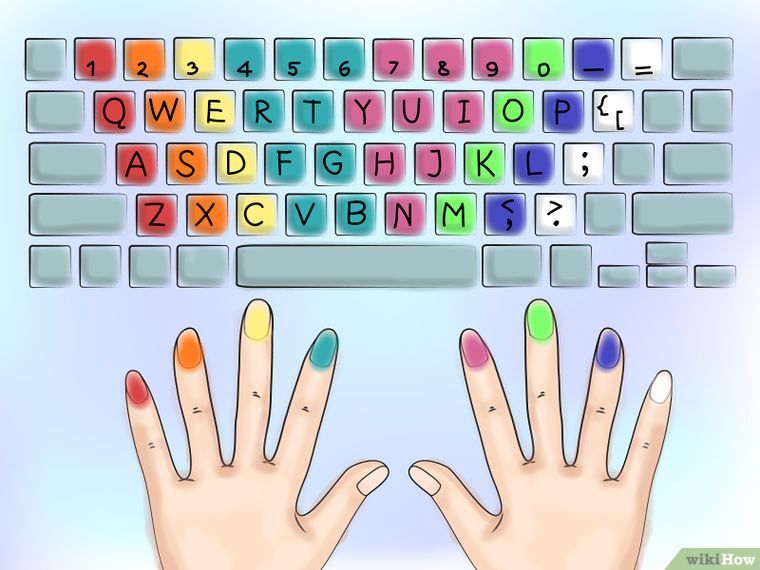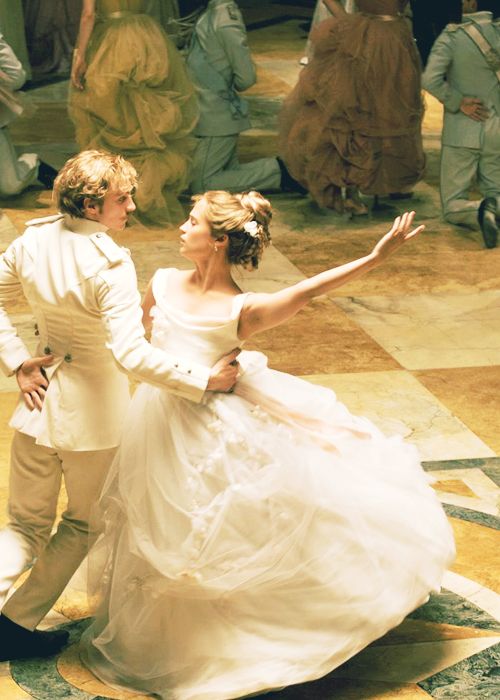How to twirl dance partner
Super spinning tips and how to turn better in dance -
Lots of teachers (and other advanced dancers) get annoyed by non-teachers trying to teach people how to dance. I’m not going to do this, because if you want to dance well and improve it’s about getting good basic dance lessons, and practice.
But so many people struggle to spin and haven’t ever been taught. Here are the tips I was given via different teachers through the years. Tips from 13 years of ballet classes and 2.5 years of salsa where we were taught turning and spinning drills from a Guinness world record holder for spinning.
Hopefully some of these spinning tips will help you in both turning and spinning better as you dance.
1. Know the difference between a spin and a turn
A turn is stepping as you rotate, in modern jive that’s usually via a ‘return’ or travelling return. A spin should be on one foot and can be a free spin or aided by the leader.
2. Learn to spot
If you get dizzy when spinning, learning to spot is essential. It’s all about practice so that you’ll do it automatically. Essentially you’re leaving your eyes looking at one spot in front of you as your body turns, then when you can’t leave your head behind anymore, you whip your head around so your eyes are looking back at your spot again as the rest of your body follows. You can start slowly and build it up. This video is a simple beginner technique for starting out.
There’re plenty of YouTube tutorials and guidance on how to spot while spinning, and it does help reduce dizziness especially during multiple splns. I find spinning is easier than continuous turning in one direction because spotting is easier when you’re preparing to spin in one place.
3. Spin and turn on one foot
To spin you need as small an area as possible on the floor. Using two feet will act as a brake and make you unable to turn.
4. Turn on the ball of your foot
I’m naughty at this because I do get lazy and tend to relax into my heel when I turn, but you should be turning on the ball of your foot. Your heel needs to only be slightly off the floor. But having your weight over the front of your foot will keep your body in the right place for turning without wobbling off in a different direction.
5. Don’t lift your spare foot up
When spinning, sometimes you see people lift their spare foot in the air (usually, bending at the knee, I presume it’s a natural reflex or they want to keep the spare foot out of the way). This will make you wobble and can also catch your partner or anyone else dancing closely. When doing a basic spin, you want to keep your spare foot next to your anchored foot, just above the floor. This keeps your body centred over your legs and should help keep you upright. It’s much hard spinning with one leg raised.
It’s much hard spinning with one leg raised.
6. Think down into the ground, not up in the air
Lots of dancers lift up when trying to spin. This could be because they’ve done ballet in the past which is about pirouetting on your toes in a releve position. But it’s more likely that we often turn under the leader’s and our raised hand, so the body tends to follow upwards as well.
Yes, you need to straighten out your body and think open rather than tight and leaning over, but if you keep your knees slightly bent and think about drilling into the floor, you’ll be more balanced and grounded. It will certainly suit a more grounded dance than one like ballet which is much lighter and in the air. You’ll also move less when you’re spinning.
It’s hard to explain. But if you’ve done any latin dancing or salsa, where you need to feel the floor through your feet to get the right hip action, the grounding and turning into the floor rather than upwards, is the same sensation.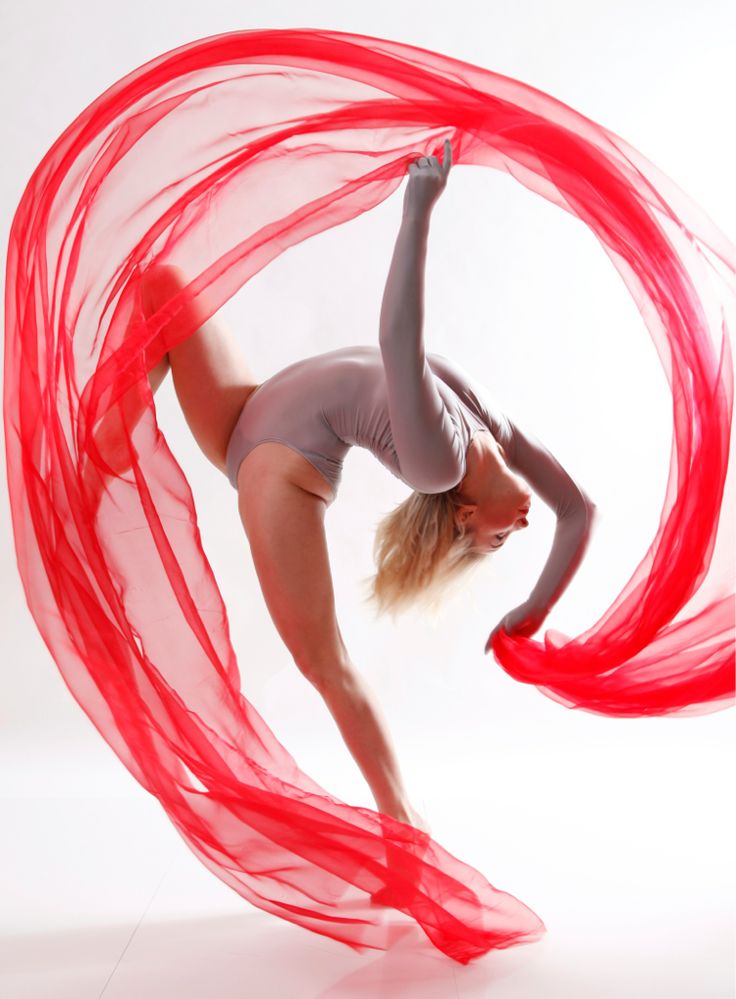
7. Have good posture
To spin well, you need to engage your core. You need to stay relaxed and not tense up your shoulders, pull your tummy in and tuck your bottom under.
Then keep your arms in a suitable position. The easiest position for a free spin is to bring your arms towards each other in front of you, at chest level, in an oval shape. Bringing one arm to join the first helps with impetous in a spin, but also keeps posture and position right. Oh and flailing arms isn’t a good look.
This clip shows a comfortable arm position and the posture needed (salsa – they do a lot more spin technique than modern jive! but you can still get tips on arm, body and foot position)
8.
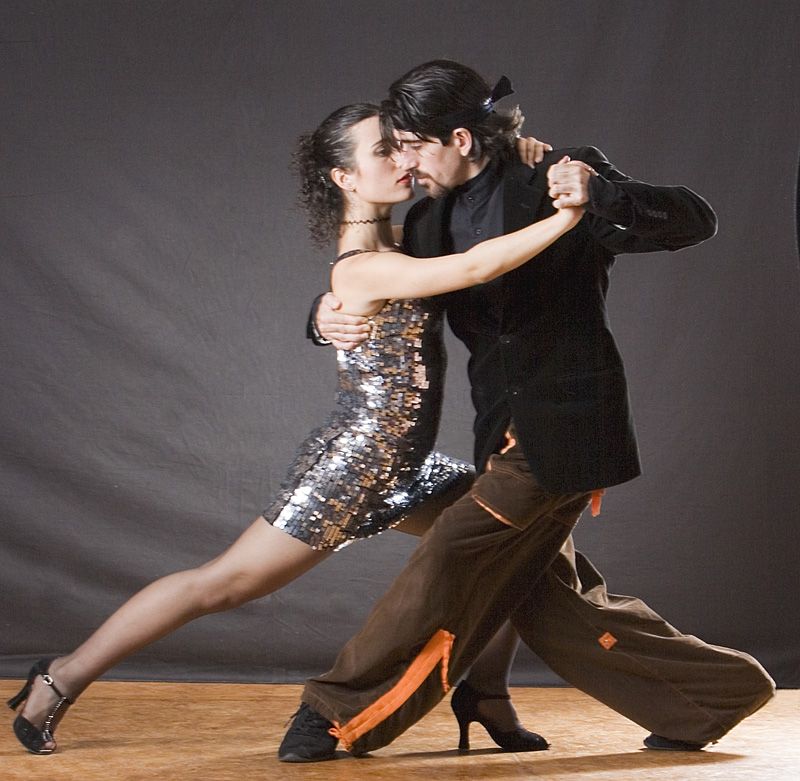 Don’t look down
Don’t look downIf you look down your weight balance will move and you’ll be more likely to fall. Look straight ahead for a steadier turn (or spot if you use that technique).
9. Don’t rush
So many people panic when they have to spin and try and go whooshing off really fast. But if you’re spinning or turning to music, you want to fill the beats you’re spinning on. If it’s a slow track, you’ll have longer to do one rotation. There’s no point whizzing round to find there’s still half the beat left to go.
10. Practice
It’s all about practice. Start with a single spin, and work up to multiple spins if you want. If you can do free spins yourself, it’s easier to then be led into aided multiple spins or turns. This clip shows the use of a clock method (admittedly for salsa spins with the prep, but the idea is the same for modern jive).
Tips for leaders
Most spinning is done by the follower, but these all apply to leaders as well.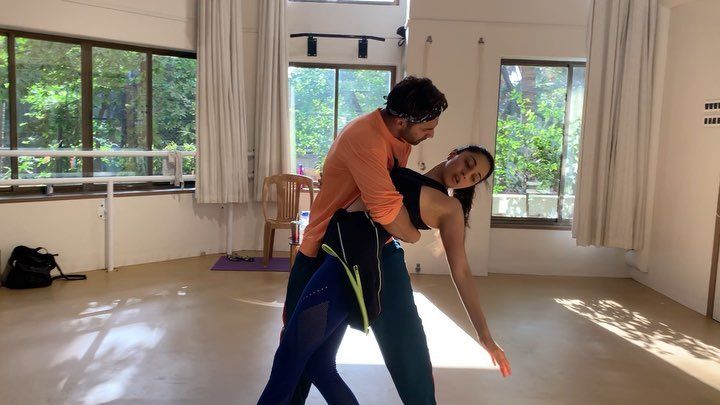 Plus if you’re prepping your partner for a spin, there’s things to be aware of.
Plus if you’re prepping your partner for a spin, there’s things to be aware of.
Don’t ever force the follower into a spin. You can prep for one (either raising the arm or prepping the follow for a free spin), but only they can do the spin.
Ensure your prep is accurate. If it’s a free spin, don’t prep the spin too far out from the follower’s centre, otherwise they will be off balance and the spin won’t work. If it’s an aided spin, raising your hand and the follower’s, to just above and in front of the follower’s head. Not really high above their head otherwise they’ll struggle to keep connection. And not below the top of their head otherwise they’ll have to duck which is a totally different move.
Own your spin
[bctt tweet=”The person spinning should always be the one in control of the spin ” username=”whatabout_dance”]
A final point to remember is that you don’t have to do multiple spins. Yes sometimes it’s nice to throw some in if the situation is right and the music calls for it.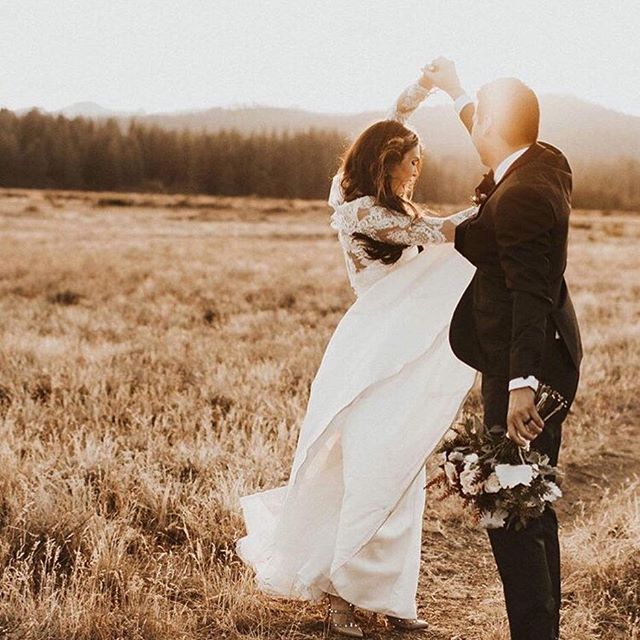 For example, I can do a double or triple (when I’ve been practising for a while), but I rarely do more than a single in freestyle. Because I’d rather have an immaculate single spin than try a multiple spin when the lead or prep doesn’t feel right, or the floor isn’t smooth enough. I’ve never had a leader moan that I’ve refused to do a double when he’s led that. I’ve usually had people compliment me on my spins.
For example, I can do a double or triple (when I’ve been practising for a while), but I rarely do more than a single in freestyle. Because I’d rather have an immaculate single spin than try a multiple spin when the lead or prep doesn’t feel right, or the floor isn’t smooth enough. I’ve never had a leader moan that I’ve refused to do a double when he’s led that. I’ve usually had people compliment me on my spins.
How do you get on with spinning? How were you taught?
Like this:
Like Loading...
5 Simple Steps to Master the Slow Dance for Beginners
There are many occasions to slow dance such as weddings, proms, and just wherever there is a music of a slow tempo. But, maybe you are intimidated by a slow dance. You don’t know where to put your hands, or don’t know how close to stand to the other person. What steps do you do in the slow dance? We’re not talking about a specific dance step like the Foxtrot; we are just talking about the slow dance in general.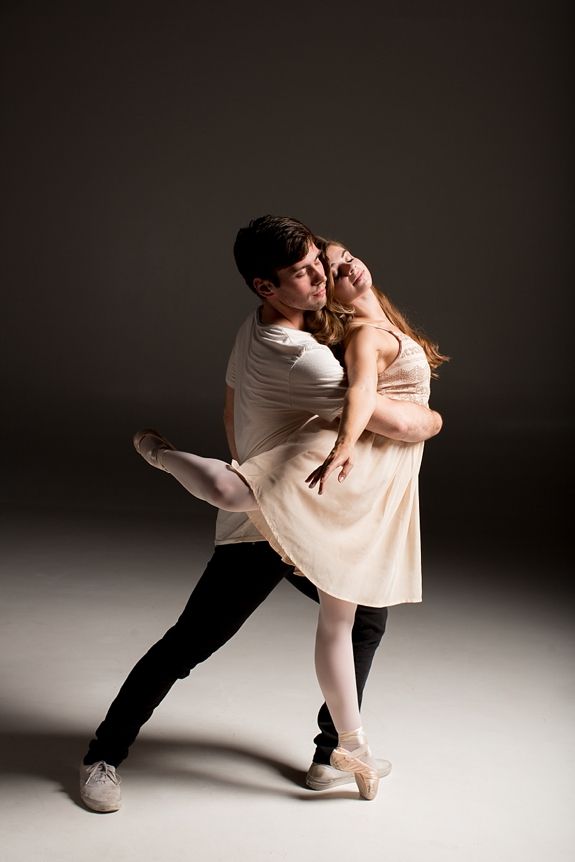 Are you a beginner-level dancer and looking for easy dance moves? In this article, we will give you five simple steps to master the slow dance so you’ll never again be fearful of being out on the dance floor when the music slows down.
Are you a beginner-level dancer and looking for easy dance moves? In this article, we will give you five simple steps to master the slow dance so you’ll never again be fearful of being out on the dance floor when the music slows down.
Slow Dancing Arms
There are two options for your arms when you slow dance.
Option 1- Slow Dancing Arms
In this option, you can think of slow dancing as an extended hug as you and your partner sway back and forth. The female places her arms on the guy’s shoulders or hangs them loosely around his neck. The guy puts his hands on the female’s hips or wraps them loosely around her lower back. Leave enough room between you so that you both feel comfortable.
As for head placement, this depends on you and your partner’s height. If you are a couple and are dancing closely, you can rest your head on your date’s chest or over his/her shoulder. Or, you can look at each other.
It’s important to stay relaxed. Try to control your breathing by inhaling and exhaling steadily to maintain an even heart rate.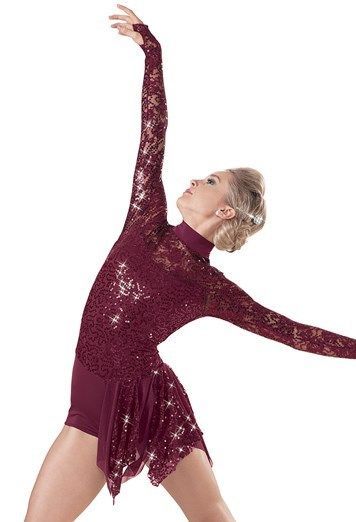
Option 2 – Slow Dancing Arms
Holding your partner’s hand is the more traditional way to sway in a slow dance. If you aren’t dating or don’t know each other well, this position can be more comfortable. The guy puts his right hand on the females’ hips or on her mid- or upper-back. If you’re dating and close, the guy can wrap his arm loosely around her waist. Then, he uses the left hand to take her hand or lace his fingers into hers. The female should put her left hand on her partner’s shoulder and hold his hand with her right hand. With this stance, your heads will probably stay forward, so you are looking at each other. Be sure to smile at your dance partner and maybe start a conversation to help relax.
Slow Dancing Feet
It’s good to be cautious of where you put your feet when slow dancing so as not to step on each other’s toes. When you first join together to dance, look down at where you and your partner’s feet fall. This gives you a general idea of how far over you can move your feet without stepping on his/her toes.
If you are close together in the slow dance, you can put one foot between your partner’s feet and your other foot on the outside. If there is more space between the partners, you can put your toes in front of your date’s toes and about an inch off to the side. Don’t get too technical on this aspect. When your bodies come together to dance, your feet should naturally fall in place.
Leading
It’s traditional for the guy to lead a slow dance. If this is just way too traditional for your taste, then the female can change it up and lead. But, someone has to lead. To lead, gently push your partner’s hand in the way you want to go as you also move your body in that direction. Follow the music and move to the beat. To follow, just follow your partner’s moves.
Swaying
The basic slow dance doesn’t require much footwork at all, so it is an easy dance for beginners. You can keep your feet planted in one place, make sure your knees are loose, and then gently sway back and forth using your hips and knees.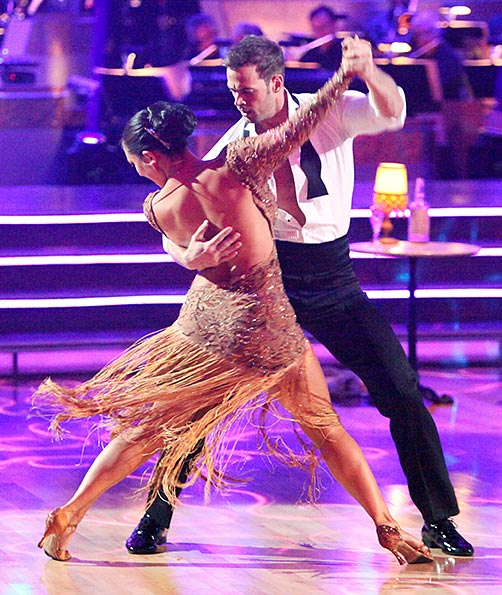 If you are confident with this, you can gently lift your feet off the floor just a bit. These small lifts can turn you in a slow circle. Remember to keep your arms and elbows loose. This will make it easier to breathe and sway comfortably.
If you are confident with this, you can gently lift your feet off the floor just a bit. These small lifts can turn you in a slow circle. Remember to keep your arms and elbows loose. This will make it easier to breathe and sway comfortably.
The Twirl
If you are leading and are feeling confident and a bit adventurous while you’re slow dancing, you can invite your partner to twirl. This is a common move so your dance partner will probably know what to expect. Take a step back from your embrace and hold your partner’s left arm up in the air with your right arm. After guiding her in turning 360 degrees, you simply return to your starting position and resume swaying.
Get Started Learning How to Slow Dance at Fred Astaire in Raleigh
Are you ready to get started learning to slow dance and other kinds of dancing? You can begin today learning these easy dance moves and enjoy the many benefits of dancing! For information on our dance classes and dance lessons, call us at (919) 872-0111 or fill out our online contact form below!
Contact Us Today
No Partner Necessary
90,000 12 life hacks, to quickly learn how to dance from Mamita DanceDances
Author: Pavel Gather
Psychologist, Lecturer Salsa and Tango
Dances
Author: Pavel Pavel
Psychologist, Lecturer Salsa
on At the start, you always want to get a quick result. When it doesn't happen, the hypothesis arises that everything takes time. After a conditionally acceptable time, humility comes to mastering pair dances, which, perhaps, is not given, and I will just do what I learned somehow.
When it doesn't happen, the hypothesis arises that everything takes time. After a conditionally acceptable time, humility comes to mastering pair dances, which, perhaps, is not given, and I will just do what I learned somehow.
This is the most common story of those who believe that the mere act of attending a pair dance class is enough to learn how to dance.
Absolutely not. If you want to really dance well, you have to make an effort outside of the dance class. A good teacher will definitely be needed, but the initiative should be on your side.
1. Listen to music
The most common and accessible advice that is given already in the first lessons. And it definitely works. Music creates a certain atmosphere of the dance and intuitively you want to move to it. It doesn't matter where you listen to music - in the car, on headphones while walking or doing household chores.
An addition that will help you dance better is your active participation in the music.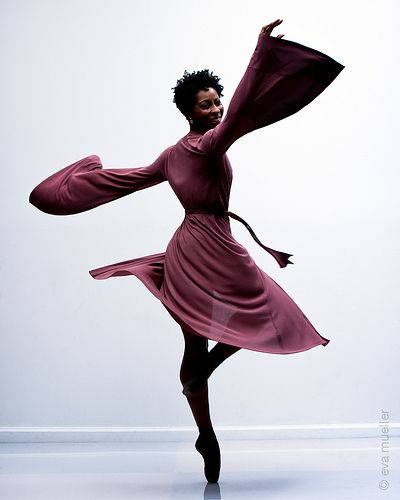 Sing along, dance or simply beat musical accents with any free parts of the body. In the subway, for example, it is enough to tap out bright moments with your fingers, in the car to sing along with sounds, and at home you can jump for pleasure.
Sing along, dance or simply beat musical accents with any free parts of the body. In the subway, for example, it is enough to tap out bright moments with your fingers, in the car to sing along with sounds, and at home you can jump for pleasure.
2. Watch videos of good dancers
It's complicated, but also obvious. It’s more difficult, because without recommendations from more experienced dancers, unfortunately, it’s not so easy to find a good quality video on the net (I mean not the resolution quality, but the content itself).
Meaningful video viewing is about building an understanding of HOW dancers make a particular impression on a partner or viewer. Technology is at the heart of everything. Understanding how the pros do it is a big step forward.
It is important to distinguish a show from a disco dance, a staged performance from an improvisation, a stylized dance from an authentic one, etc. Ask for recommendations and dance teachers will always throw off a couple of videos of worthy landmarks.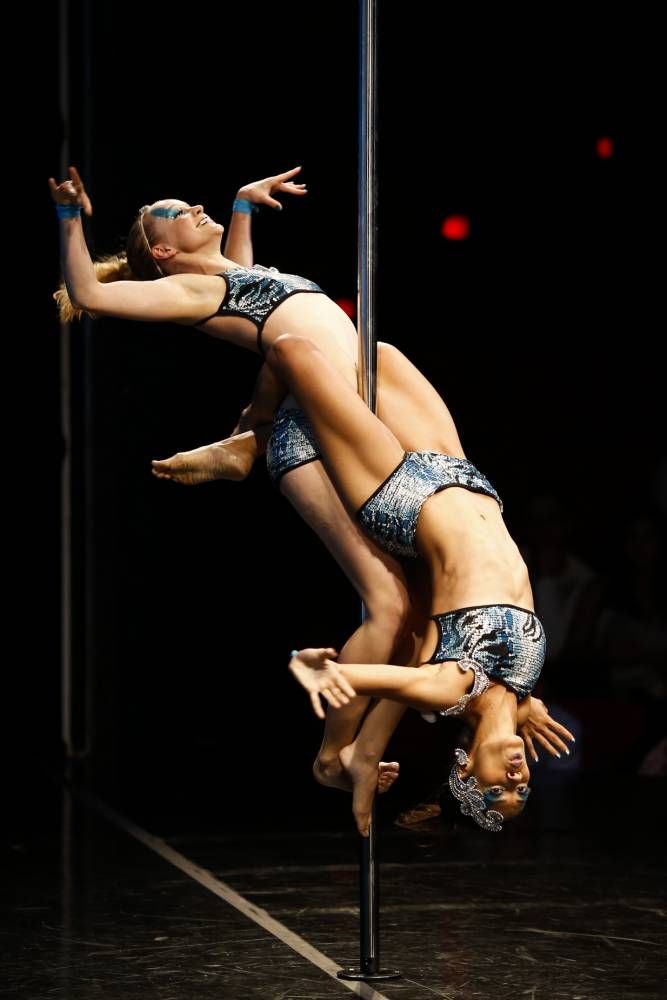
Tango Z. Showreel.
Online modern tango courses
Tango nuevo is the most advanced version of tango. We can quickly learn to dance from zero to a steep level.
| View details |
3. Dance in salsatecas/milongas/discotheques
A very delicate moment when it is worth coming to the first party. From a technical point of view, most students in 1-3 months have a sufficient set of figures and techniques to come and dance calmly. Psychologically, the same moment can be stretched out for an indefinite time. After all, it is imperative to “not lose face”, “learn more figures” and be sure what to do in case “there is an unfamiliar movement”.
In fact, the partygoers don't really care (except for a small layer of non-professional teachers who want to help inexperienced dancers by treating them as customers in the future). It is important to come and try dancing after a month of classes.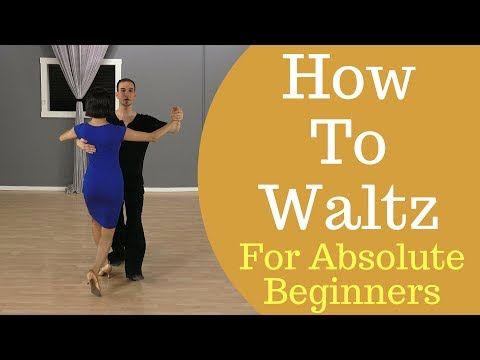 You can only with friends or guys from your group. This will be enough to feel the adrenaline and inspiration from the dance.
You can only with friends or guys from your group. This will be enough to feel the adrenaline and inspiration from the dance.
4. Dance with partners or partners not of your level
The conventional wisdom that you need to practice in groups of your level does not withstand the test of experience. Perhaps now your eyes widened in surprise, and you want to meaningfully read the phrase again. Yes, you saw everything correctly: when you dance with a partner of your level, you don’t grow anywhere.
It's important to understand that not only does it work one way and you have to dance with cooler dancers, but it works even more effectively the other way. It is no coincidence that teaching pair dances dramatically raises the level of the teacher himself. You have an endless stream of very beginner dancers.
How it works. A more experienced partner needs to be "stretched". It's easy and obvious. With beginners, you need to take more initiative on yourself, see the general pattern of the dance more widely, turn on and insure more, try to be an example and be more careful.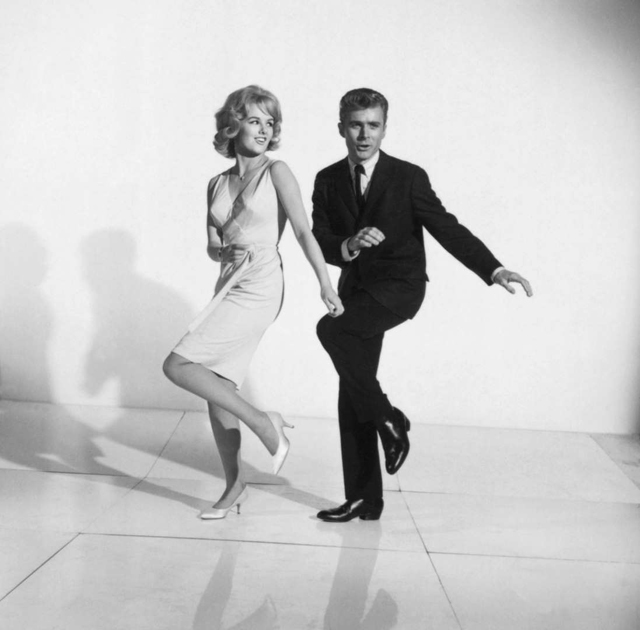 The quality of interaction begins to grow significantly. And wonderful partners too.
The quality of interaction begins to grow significantly. And wonderful partners too.
Dancing with partners of your level doesn't make you grow. Dance with both beginners and more advanced dancers
Dominican Bachata Women's Style Online Course
Want to learn how to hypnotize those around you with the most appetizing part of your body? On the course we will tell you all the secrets.
| Interesting |
5. Learn to dance for a partner and for a partner
Turks and Argentines are one of the best partners in the world. In Russia, partners are highly valued. Why? The answer is simple. In Argentina and Turkey, it is not questionable for men to ask another man to lead in one piece or another and give feedback on the quality of the lead. For them, it will be a great shame to hear moralizing from a partner, or even more so to be known in the community as an insecure partner.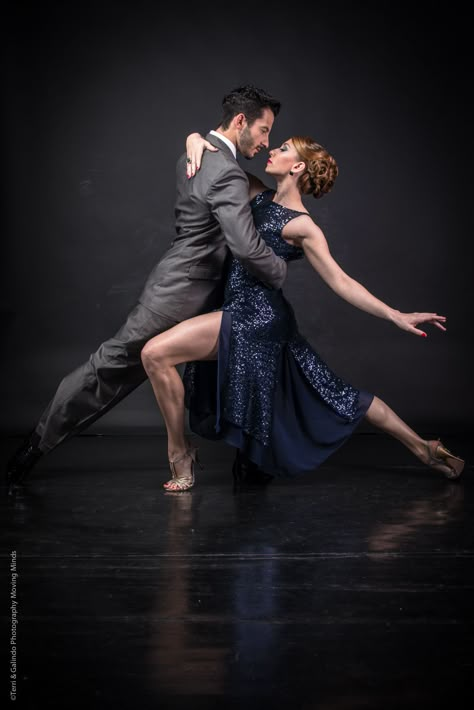
In Russia, due to the constant, often far-fetched, opinion that there are more women in pair dances, partners calmly get up and study their partner's part. Such partners then grow into very cool dancers and teachers. In no case do this at parties, only in class. Here we are talking only about the learning strategy. At parties, be yourself.
6. Do not memorize the links
Always try to look deeper and understand the through principle and idea of movement. Understanding what and how is done will make it possible to independently generate any sequences and chips.
Human memory is limited and there will always be a moment when something will escape and your repertoire will be limited by the size of RAM.
In Argentine tango, for example, there are seven levels of movement construction that, when mastered, will allow you to make millions of combinations. And how many dance sequences can you really remember? In rueda, more than 150 figures dance in a rare circle. It's hard to keep more in mind.
It's hard to keep more in mind.
7. Develop your body
Many years of experience in teaching couple dance shows that as soon as everyone pairs up in a class, any progress in individual style ends. But it is the individual style that distinguishes everyone at the disco: partners change, and style is always with you.
The body as the main instrument of dance must be very plastic, responsive and emotional. Surprisingly, not all pair dance schools have a general physical warm-up. It is vital to tune the body and understand how it works.
You can always train extra and concentrate more on the basic steps, as their true value is as body work. The sequence of steps is, in fact, the simplest thing that can be in pair dancing. The quality of individual performance determines the craftsmanship.
8. Try on the images of inspiring dancers
A psychological life hack for those who have already mastered the steps, but still feel that there is not enough brightness and drive.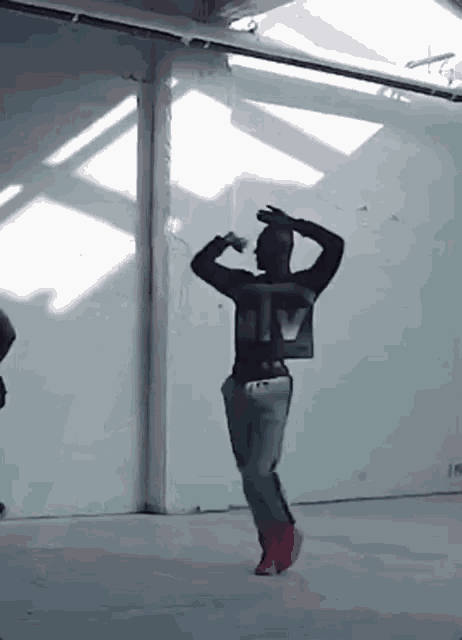 Most are terribly afraid of being someone else's "clone". Here the action is the same as under the influence of hypnosis - the more you resist, the more you plunge into an altered state of consciousness.
Most are terribly afraid of being someone else's "clone". Here the action is the same as under the influence of hypnosis - the more you resist, the more you plunge into an altered state of consciousness.
With a high degree of probability, you are already dancing like someone else's "clone". A meaningful fitting of someone else's image is that you mentally take the image of the one who inspires you (inspiration is critical in this case) and "put on" yourself. Then you start dancing and trying to feel in general how it is to be able, for example, to be the best partner or the sexiest partner in a disco. This is much more difficult than it seems. But it works extremely efficiently.
9. Dance to offbeat music
Habitual rhythms keep you tight. Tango salon or speedy timba leave little room for experimentation and fantasy. Pattern dancing is always noticeable and is reserved for beginners.
The truly new is born outside of the usual.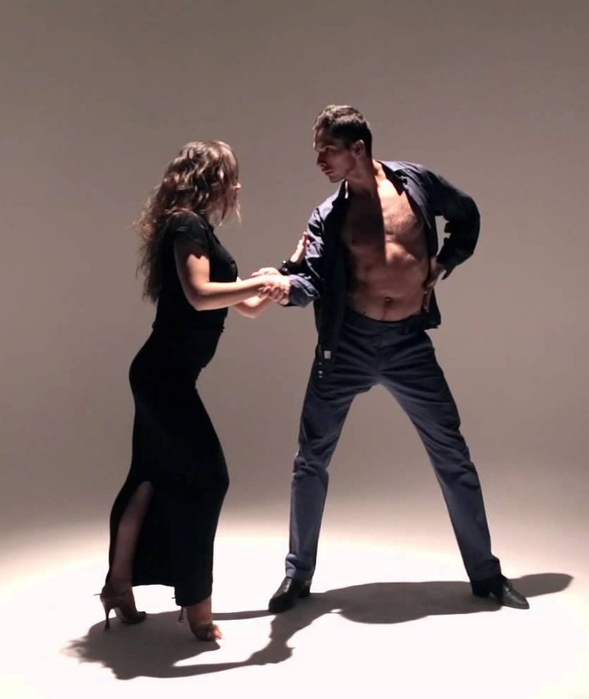 Look for places to experiment. If there is no place, organize self-training. The main thing is not to get carried away, because music determines the style. We bring something new to pair dances, rather than trying to change them.
Look for places to experiment. If there is no place, organize self-training. The main thing is not to get carried away, because music determines the style. We bring something new to pair dances, rather than trying to change them.
Search, improvise, don’t be afraid to go beyond, develop in different directions, be inspired by music atypical for the style
10. Try your hand at basic dance directions
dances exist according to their own non-choreographic laws.
This is the deepest delusion, which has turned into a ceiling for the qualitative development of partner dances. After all, all professional dancers, for example, in salsa or bachata, build their ideas on the basic choreographic principles.
Do not think that choreography is only applicable on stage. Any meaningful movement of the body can be choreographic. In general, try classical or modern choreography. Basically, hip-hop can work too.
11. Look for battle sensations
Pair dances return us to an active position of manifestation of our body. As in the days of our ancient ancestors, we impress the members of the opposite sex by how dexterous, hardy, sexy, etc. we are. Modern laws of the jungle in the entourage of big cities.
If you look around the dance floor, it becomes clear that the majority are clearly herbivores (not in the sense of vegetarians, but in relation to those around them). I am sure that predators are always more interesting in terms of the attractiveness of the image - try to find a counterbalance among herbivores, for example, a cat woman or a lion man.
The conversation is about an internal position, not about aggressiveness. Lability and lack of control are inherent in adolescents, and not in adult self-sufficient people.
Accordingly, even a training or friendly battle gives, on the one hand, practical skills - to make a bright sequence of movements, bring an idea to a climax, show a spectacular feature, on the other hand, develops the psychological basis of the dance - self-confidence, resistance to extraneous attention, self-control and self-control in complex elements.
12. Communicate with professionals
The environment shapes the internal position. Basically, real passionaries of the dance community are ready to openly talk, discuss and support the development of dance in every possible way. Universal principles and the ideas they articulate have a much longer and more practical perspective than meets the eye.
Accept that, for example, behind the words "listen to your partner" is not only a beautiful metaphor, but also a practical skill to literally listen to your partner. At the same time, always treat every thought, even the most respected teacher, as a private opinion.
Your skill will lie in finding the scope of the idea even in conflicting opinions. Most often, the contradiction is speculative and the truth lies in the angle of perception or situationality.
Your dancing growth will stop sooner or later. This can happen at the level of three basic steps or years of experience in teaching and show performances.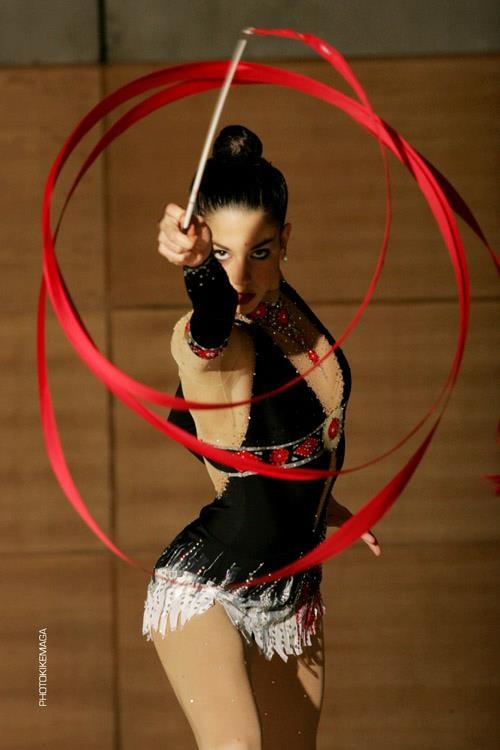 Regardless of your level, the suggested 12 life hacks can get you off the ground and greatly accelerate your dance growth. There is no way here without your motivation and activity. Take your dance development into your own hands. 9Ol000 Dangerous sexuality
Regardless of your level, the suggested 12 life hacks can get you off the ground and greatly accelerate your dance growth. There is no way here without your motivation and activity. Take your dance development into your own hands. 9Ol000 Dangerous sexuality
Salsa: destroyers of stereotypes
Couple dancing as a source of strength.
Self-destruction of the couple dance community
The Salsa series as a mirror of the community
Mamita Fridays: salsa, bachata
Destroying the myths about leading pair dances
Does dancing make us better?
The seven deadly sins of teachers
Why we will never dance bachata like the Dominicans
Why tango?
Dispute over musicality
Selection of dances according to alcohol preferences
Where to find inspiration for dancing?
Terrible tango nuevo
Distribution of roles in a salsa party
Argentinean tango through the eyes of a salsa dancer
Is there a predisposition to dancing?
Which is more effective: individual or group lessons?
Sexual overtones in couple dances
Lead-follow scheme in social dances
This article is written on the example of salsa, but it is relevant with minor amendments for most social dances.
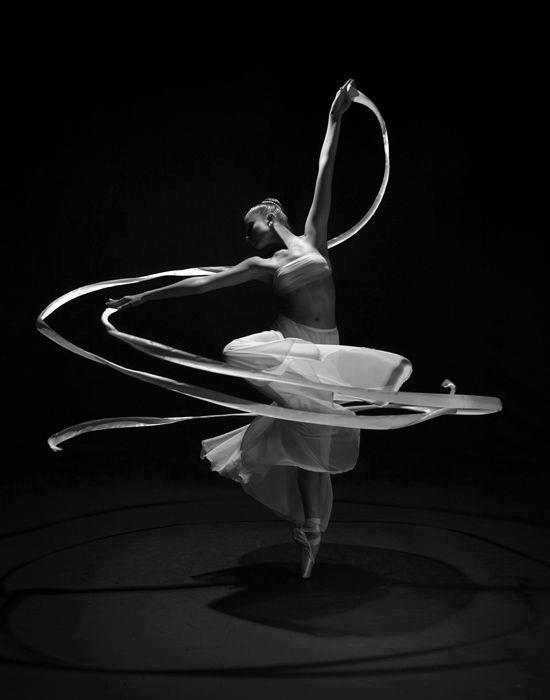
Any interaction in a couple implies the activity of both partners. That is, the execution of any movement depends on how the partner gave an impulse or accompanied the partner, and on how she reacted. Thus, it would be appropriate to consider the interaction in a pair from two sides, one of which we will call “leading”, and the other, female, “statement”.
Both parties rely on a number of basic principles, which we will try to reveal below.
Principle 1st. Volume
Both in the lead and in the record, we are dealing with “information” that passes from the partner’s hips into his hands and further into the partner’s hands, through the body to her hips. Actually, it is in the interests of both partners to ensure the fastest, complete and understandable transfer of this information. The moment of "understanding" depends on the partner, but the speed and volume - on both participants in the dance.
In order to explain how to transmit and receive this information, we use the concepts of "volume" and "frame".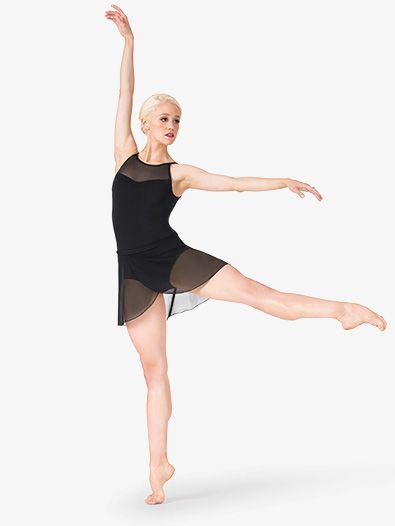
Frame is a collection of key points in the dancer's body, the connection of which allows the transmission of impulse. The frame includes 4 points of the body - “shoulder blades” and “hips”. The continuation of the frame is the volume - a set of points in the hands. The volume can also include the shoulder blades and even the elbows, wrists and fingers.
Thus, the blades are the place of "docking" of the frame and volume.
Contrary to the generally accepted understanding of volume as something static, we perceive it precisely as a dynamic characteristic. After all, for example, if the partner fixes her hands, this does not mean that she will take the lead. Volume manifests itself precisely at the moment of appearance of conducting. We can say that the volume is held by the fact that the lead passes through it without distortion. This is felt as a proportionality of the strength of the lead and the displacement of the partner's or partner's body, as well as the fixation of volume points and "collected" muscles. The collected muscles are a state that is intermediate between relaxed (when the arms hang) and tense (when the muscles in the arms protrude). Imagine that you are balancing on the ground. In this state, the muscles are in good shape, but not clamped. This tone allows the impulse to pass completely, without stopping at any of the points in the volume.
The collected muscles are a state that is intermediate between relaxed (when the arms hang) and tense (when the muscles in the arms protrude). Imagine that you are balancing on the ground. In this state, the muscles are in good shape, but not clamped. This tone allows the impulse to pass completely, without stopping at any of the points in the volume.
In general terms, the dribbling path looks like this: the partner's hips move, and the shoulder blades move along with them. The impulse from this displacement travels through the partner's elbows, wrists and fingers into the partner's fingers. It is then passed through the partner's elbows and shoulder blades into her thighs, causing a corresponding displacement in her body. That is, if the partner holds the volume well (all points are fixed, and the muscles are collected), then the slightest displacement of his hips will already be felt in the partner’s hands. It is the same with her: with the collected volume and frame, the impulse from the partner will pass completely to her hips, setting her in motion.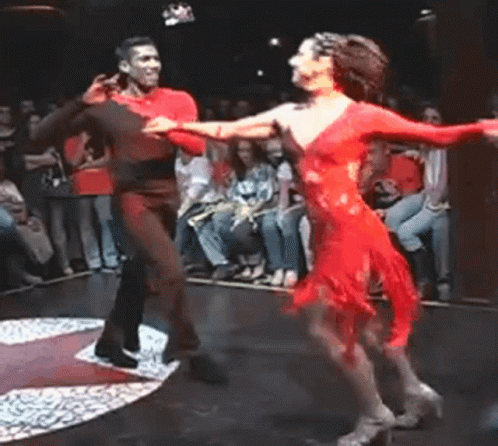
I must say that the moment of "response" to the partner's impulse occurs exactly when the partner does NOT distort her volume under the influence of his lead. If the partner holds the volume, then the partner's impulse will work in two directions at once - her movement and the response to the partner. Two in one. Thus, there is no need to think about answering your partner.
Common mistakes
It should be noted that maintaining volume is not an easy task. For a partner, she is generally one of the key ones. The mistake of many partners is that they think about the response to the partner's impulse, and begin to create their own impulses that "noise" the lead.
The partner does not create her own impulses, she only conducts the partner's impulses into her body.
Two types of errors can be distinguished: slips and clamps .
Overshoot is a displacement of any point of the frame or volume, which leads to a decrease or disappearance of the dribble.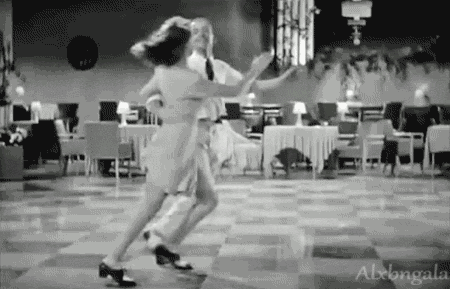 Breakthroughs can occur at absolutely every point of the frame or volume. The most common is a slip at the elbow. The elbow flexes or extends during the lead, and this can happen to both partners. Leaks in the fingers and shoulders are also common.
Breakthroughs can occur at absolutely every point of the frame or volume. The most common is a slip at the elbow. The elbow flexes or extends during the lead, and this can happen to both partners. Leaks in the fingers and shoulders are also common.
Clamp is a muscle tension, usually chest or arms, which leads to "pinching", "silencing" the lead. Clamps are most common with female partners as they try to "not miss the impulse". As a result, they "eat" part of the partner's lead in the muscles. In this case, the dance turns into a fight.
The most common case of clamping in a partner is the so-called "driving with hands". In this case, the partner does not transfer information from his own movement to the partner, but tries to inform her of guiding with his hands separately from the body. Then the muscles of the hands are more involved in the work, and the lead becomes illogical and rude. The partner is often abrupt, out of balance, “tearing” movements, etc. Such boys, as a rule, are not very popular among girls.
Such boys, as a rule, are not very popular among girls.
Principle 2. Movement
This principle is very closely related to the volume, but still we found it necessary to focus your attention on it separately, since the movement is both the beginning and the end of progressive leading. It is important.
The dribble begins with the partner's movement, because only by moving can he inform the partner that she is moving. The partner, in turn, must remember that the ultimate goal of the lead is her movement. Leading should not remain inside the couple, it serves to ensure that the partners move relative to each other and understand where and why they are doing it.
Common mistakes
Everything is simpler here: either the partner stands still, or the partner. If the partner stands still, then he is forced to start leading her with his hands, which is fraught with danger - see above. If the partner does not go from leading the partner, then she becomes a difficult partner, as he increases the strength of the lead, and in order to resist him, she is forced to include the muscles of the hands separately. He leads, she stands - what is it worth?
He leads, she stands - what is it worth?
Principle 3. Continuity
There are many different points of view regarding the interaction of partners, especially in the NY style. Some argue that the partner should do everything herself, others - that not a single step without guidance. If we imagine these points of view as two poles of a continuum, then our version is somewhere in the middle, maybe a little closer to the right edge.
We start from the fact that social dances imply improvisation, that is, the partner will never be able to know for sure what the partner will require of her. Therefore, she needs constant contact, exchange of information with her partner, so that each new “message” is not a surprise for her, and she has a chance to respond to it in time and correctly.
In order to find a consensus between the two approaches, we have divided the partner's lead into "lead", "momentum" and "accompaniment" directly. Accompanying in static is called "feeling". If we translate the language of interaction into the language of communication, then these three types of interaction would correspond to the phrases:0003
If we translate the language of interaction into the language of communication, then these three types of interaction would correspond to the phrases:0003
Interaction - Communication
Impulse: "Let's go!" or a harsher "let's go!"
Leading: "we have an idea"
Accompanying, feeling: "Are you there?" or "I'm here, and you?"
Thus, it turns out that the partner and the partner are constantly in one of three types of interaction: accompaniment, leading or impulse. If both keep the volume, then the interaction is continuous, although not the same in different moments of the dance. The interaction of partners in the dance is never interrupted, it is only transformed
Principle 4. Grounding
This is also an extremely important principle, which, unfortunately, is not followed by many dancers. We have already said that dribble comes from shifting partner's weight. In fact, the interaction in a pair is the interaction of the weights of the partners. And it is very important that these weights go to the floor. This means that with each step you should step on your foot and "drown" the weight in the floor. Only in this case, the partners will be able to compensate for each other's weights and be stable.
And it is very important that these weights go to the floor. This means that with each step you should step on your foot and "drown" the weight in the floor. Only in this case, the partners will be able to compensate for each other's weights and be stable.
Common mistakes
When we turn, the weight really needs to be transferred to the center of the body, lifted off the floor, but if this position is maintained throughout the dance, then we risk “flying” over the parquet without controlling the situation.
Partners who lead their partner without support on the floor are generally perceived as "unreliable", especially when dancing to fast music. Compensation for the partner's weight by the muscles of the upper part of the body does not allow her to lead in a timely manner, moreover, such partners usually have steps that diverge from the lead, and therefore they often lead not to the music. Partners cannot give their weight to such a partner, because they feel that in this situation he will fall on them, so the poor things are forced to perform all the figures on their own, and it is very difficult to fast music. If the partner “leans” on the floor, then he is able to compensate for the weight of the partner, her inertia, and redirect in the right direction. If not, then most of the time is spent on the repayment of inertia in the muscles, and there is no time and energy left for leading.
If the partner “leans” on the floor, then he is able to compensate for the weight of the partner, her inertia, and redirect in the right direction. If not, then most of the time is spent on the repayment of inertia in the muscles, and there is no time and energy left for leading.
"Flying" partners - this is the name of the girls who do not compensate for the partner's weight with their own, but immediately follow him, as if they were already being led. Flying partners are common, they are often considered good because they are really well behaved. They immediately react to any weight that appears in the partner's hand as a dribble and follow him. In fact, it turns out that such partners always dance in the “accompaniment” mode. The disadvantage of such a list is that the time allotted for interaction is used for movement: partners often rush into music, change legs, and generally take an order of magnitude more steps than necessary. It’s fun to dance with such partners, but you won’t get a real buzz of mutual understanding.
Now more about the specifics of the male and female parts of the interaction.
In order to reveal the topic of dribbling as widely as possible, it is also necessary to single out 2 more types - translational and rotational dribbling. This, respectively, is driving in motion and in a turn.
If the forward lead of partners and partners is in many ways similar, then in the rotational lead, the role specificity in the dance is more than ever manifested. Let's try to open it.
Guidance can be characterized in terms of two parameters – momentum and trajectory. In translational dribbling they coincide in time, while in rotation they are divorced and alternate.
Partners
To inform the partner of the turn, the partner needs:
- Prepare the partner (in a good way it would be necessary)
- Rest on the floor
- Give her an impulse.
- Show trajectory and follow
- Catch
Partner preparation is needed so that the partner can be sure of the answer.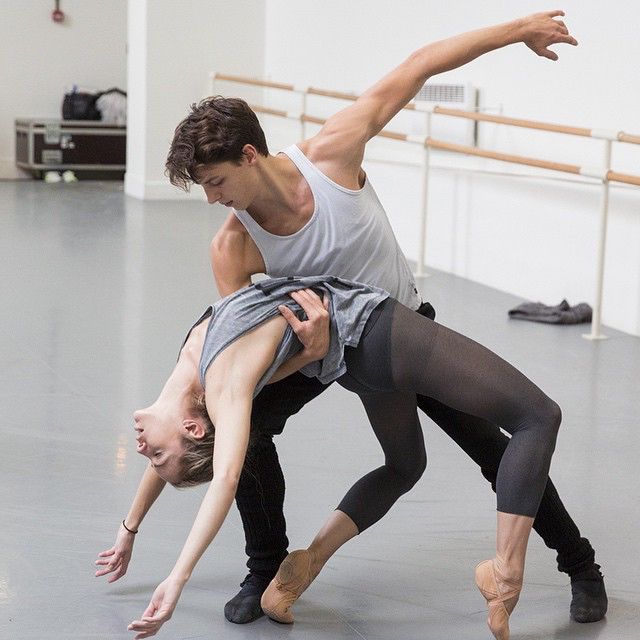 If the partner is informed that she will be rotated, then she is more likely to take the impulse and carry it into her body. If the turn starts suddenly, then an inexperienced partner can let her hand be taken away from her volume. This is usually uncomfortable and even painful. Since turning in most cases implies an impulse that is sharper and stronger than leading, it is worthwhile for the partner to warn the partner in a gentlemanly way.
If the partner is informed that she will be rotated, then she is more likely to take the impulse and carry it into her body. If the turn starts suddenly, then an inexperienced partner can let her hand be taken away from her volume. This is usually uncomfortable and even painful. Since turning in most cases implies an impulse that is sharper and stronger than leading, it is worthwhile for the partner to warn the partner in a gentlemanly way.
The floor support is, in our opinion, an integral part of any rotational lead. The stop has two functions. First, it allows the partner to communicate force (momentum) through the body, from the floor to the arm. Such an impulse, as a rule, is much more restrained and softer for a partner. Then it is redirected by the partner's hand to the trajectory necessary for rotation. Secondly, the emphasis allows the partner himself to keep up with the partner if her turn was in progress. Resting on the floor, the partner controls his own body and is able to move it further behind the partner to the required distance.
The message of the impulse, as already mentioned, occurs through the body from the stop. The impulse given by the partner in time passes through its volume into the volume, and then into the body of the partner. The partner, as a rule, has several sources of impulses in the turn, but one of them - for sure - must be the partner's impulse. This allows the couple to remain in interaction and harmony all the time.
After giving the impulse to the partner, it is necessary to accompany the turn of the partner. In salsa there are a great many situations of turns, but if we take the classic ones, then in them the accompaniment occurs along the border of the partner's volume. For example, the partner puts her hand in front of her at an angle of 3 x 90 (between the shoulder and chest, between the lower surface of the shoulder and the body, between the elbow and shoulder). In such a situation, the boundary of the volume will be shown by its brush, which, in rotation, will describe the circle.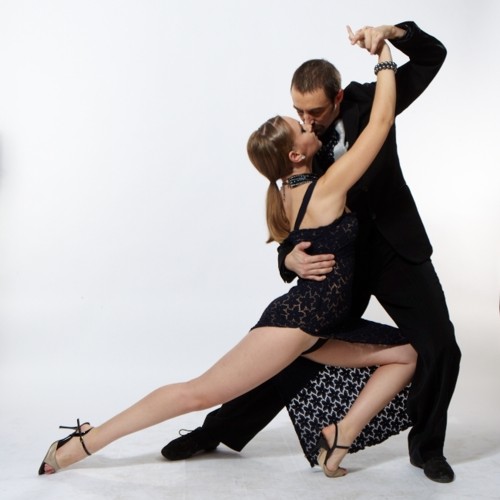 For the most comfortable turn, the partner needs to accompany the partner along this circle.
For the most comfortable turn, the partner needs to accompany the partner along this circle.
Stop rotation should be as gentle as possible. It also occurs on the border of the partner's volume. The best option is if the partner is warned in advance that the turn is ending, and she has the opportunity to stop on her own when the hand drops to the standard dribbling position. If the stop is more abrupt, then it is better that the partner absorb it if possible. In any case, letting your partner go into a turn and not stopping her is not good. Turning, the female partner counts on the support of the partner.
Partners
The beauty of rotational impulses for a partner is that, having answered them correctly, the partner already receives an impulse to turn from the partner and can rotate without applying almost any effort.
This, of course, does not apply to all types of turns, but to many of them. The point of adopting a rotational lead is the same as a translational lead - the preservation of volume.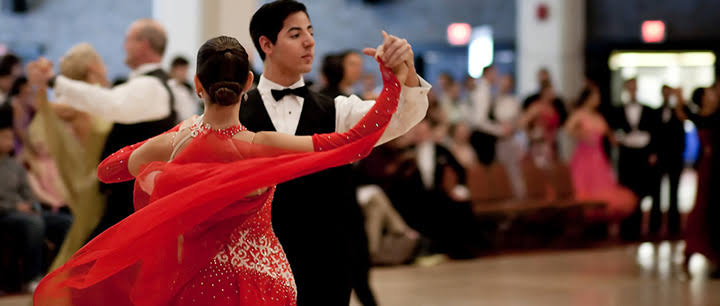 Only this time it occurs at the expense of the pectoral muscles. In a tense form, they do not make the sheet heavy, but at the same time they do not allow the hands to both go inside the volume and leave it. You can feel them if you put your palms together in the middle of your chest and start pressing them against each other.
Only this time it occurs at the expense of the pectoral muscles. In a tense form, they do not make the sheet heavy, but at the same time they do not allow the hands to both go inside the volume and leave it. You can feel them if you put your palms together in the middle of your chest and start pressing them against each other.
The female partner can take rotational dribble from three levels - upper, when her arm is bent at an angle of 3X90 (we call this position a frame), chest level, when her elbow is raised so that her forearm is parallel to the floor; and lower when her hands are in the standard position.
At the middle level, the level of the chest, guiding occurs, as a rule, only in one direction - inside the volume. When the partner's hand comes to the boundary of the volume, that is, when the angle between the shoulder and the body becomes straight, she needs to clamp the pectoral muscles. In such a situation, the partner's impulse will immediately pass through the partner's volume into the frame, in the opposite direction to the leading hand, the thigh, and create a moment of rotation.
The situation is more complicated when the dribble occurs at the lower and upper levels. Here the partner can bring the hand both inside the volume and outside. When leading inside, the process of accepting an impulse occurs in exactly the same way as when leading at chest level.
When an impulse involves the disclosure of the partner's volume, it is most advantageous for ladies to receive it using a spring. The spring is such a conjugation in the pectoral muscles, which involves the distribution of resistance to the conduct of a partner. So, if it leads to the left wrist, then the right one resists. If the partner manages to distribute the resistance in this way, then at the moment when the partner gives her an impulse to turn, she, as it were, slams into her volume to the hand into which the impulse was imparted. When the hands come into volume, an impulse is formed in the body, which turns the partner.
The use of a spring offers several advantages:
The spring multiplies the momentum given by the partner. I don't know why this is happening, but it is so =)
I don't know why this is happening, but it is so =)
If the turn involves advancement, then the spring helps the lady to stay on the line, despite the man's momentum, which is directed along the arc.
The spring maintains the axis of rotation, since the position of the partner's body at the time of release of the impulse is symmetrical.
It must be remembered that all manipulations with the partner's impulse occur within the partner herself and do not concern the partner. As well as in translational dribbles, in rotations the female should not deliberately respond to the partner on his dribble, this redistributes the tension in her body and can spoil the turn. In addition, unnecessary resistance makes the turn difficult for both partners.
The response to the partner's impulse also occurs at the moment when the partner collects the pectoral muscles and does not allow the volume to break.
Calling these principles and rules of keeping and record, we, of course, do not pretend to be absolute completeness and objectivity of all of the above.